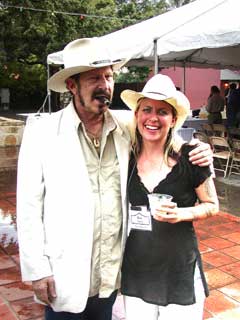Any paper considering a redesign quickly learns that it’s not all about cool-looking fonts. A redesign’s success can depend as much on how it’s implemented as on what‘s implemented, and aesthetics have surprisingly little to do with it, especially given the fiscal impact a redesign, or lack thereof, can have on a publication.
That’s why six Association of Alternative Newsweeklies members were willing to share their own pitfalls and successes and be everyone else’s guinea pigs during the June 26 panel, “Make the Most of Your Redesign,” at the AAN convention in San Antonio.
While the panelists’ experiences represented a cross-section of redesign scenarios, one issue in particular emerged as a hot button for all: to hire or not to hire outside help.
Design consultant Kat Topaz, pointed out that “an outside person can come in and suggest things you’re never going to be able to say.” Oklahoma Gazette production director Stefanie Brickman agreed with Topaz. Having been through three different redesigns, she’d found that “from a psychological perspective, it’s easier for your group to have an outsider. Let them do the dirty work.”
Showing slides of New York Press’s successful in-house redesign, publisher Chris Rohland offered an alternative scenario. “We didn’t spend the money on a consultant because we had a talented editor and art director who wanted to do it,” he said, then added, “It works as long as everybody’s involved.”
The panel unanimously echoed his sentiments and exchanged stories of redesign success or failure hinging on that one aspect — communication. As Tucson Weekly’ editor Jimmy Boegle put it, “The biggest, most important thing you can do is communicate the heck out of it.”
From editorial to production, from ad staff (“they’re the ones on the front lines,” Brickman chimed) to the receptionist, the goal is to keep all employees invested in their work even if they don’t love the redesign. “Not everyone has to love it,” said Topaz, “but if they’re part of the process, they get to vent.”
And indeed, venting proved constructive, for audience members eagerly shared their own woes and queried the panel for advice well beyond the 6 p.m. cutoff of this last seminar on the last day of the convention. As Garcia Media’s Kelly Frankeny finished off with a slide show on the anatomy of a redesign, audience members gathered their handouts and water bottles, shuffled into the aisles, and flowed not out the door but toward the panelists at the front of the room, hungry for more.
Nora Ankrum is a proofreader at The Austin Chronicle in Texas, where she sometimes writes on topics such as fifth-grade slumber parties, “Dirty Dancing” and renegade feminist synchronized swimmers. In her spare time she copyedits the zine Two Note Solo.

